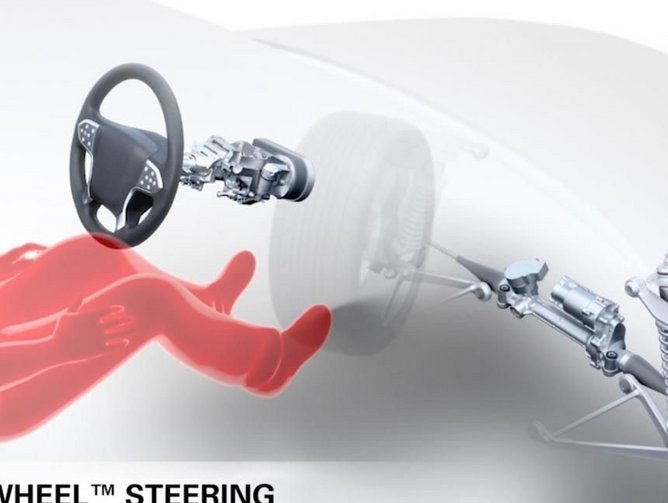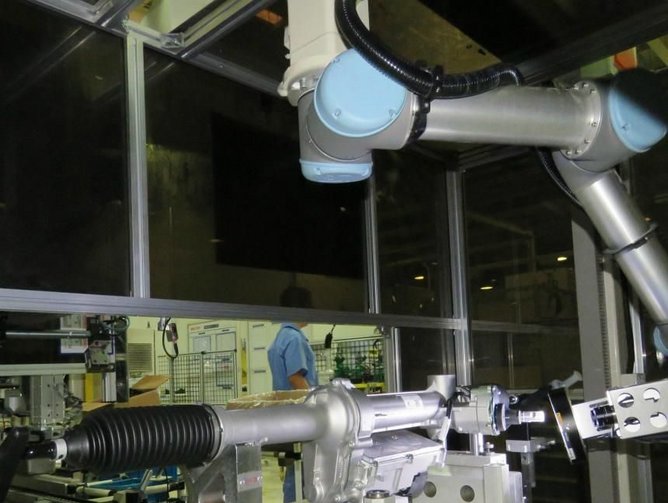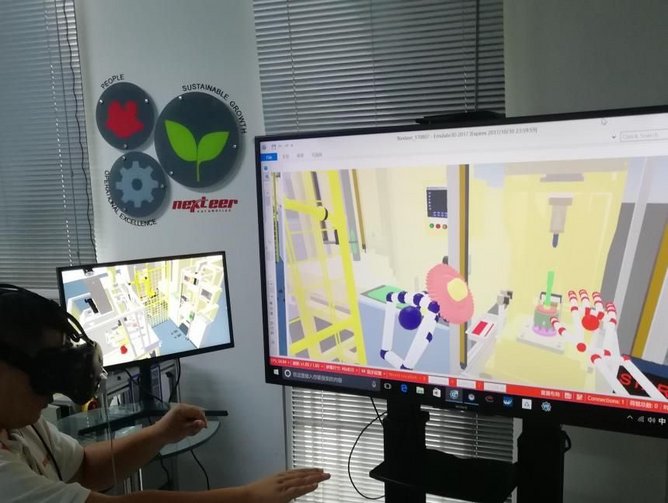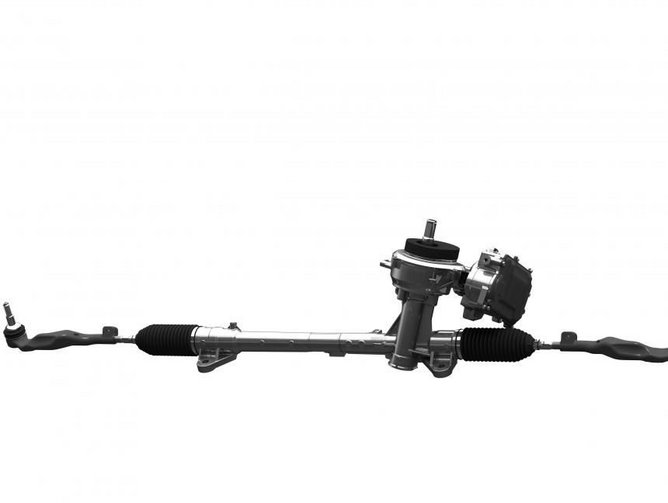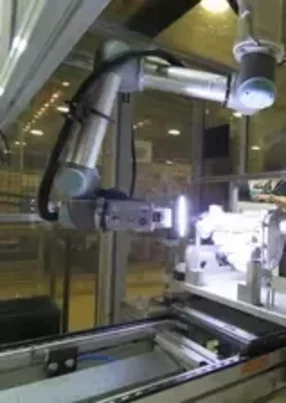Driverless cars used to be a thing of the future. However, now, with technological innovation, Nexteer Automotive is making autonomous cars an ever-closer reality. Specialised in steering and driveline solutions, Nexteer Automotive is the number three global supplier of steering systems and half shafts.
“Our vision for the future is to be a leader in intuitive motion control,” says Alberto Rodriguez, Asia Pacific Manufacturing Engineering Director. “This is an important objective for us because, as the automotive world is evolving to become more autonomous, ‘intuitive’ will be a keyword which defines our company’s vision.”
Nexteer Automotive is a multi-billion automotive company purchased in 2010 by Chinese firm Pacific Century Motors from General Motors. However, the company’s roots run much deeper. Nexteer Automotive originated in 1906 as the Jackson, Church and Wilcox, Co. in Michigan, USA and was later acquired by the Buick Motor Car Co. in 1909. Buick eventually became General Motors. It is this rich heritage and expertise that gives the company a competitive edge, explains Rodriguez.
“Vehicle system integration is in our DNA. That’s why when we work with OEM’s - we can clearly understand their requirements and their product needs. This allows us to provide highly-customisable and suitable steering solutions for the industry and it’s why we are the partner of choice for OEMs.”
Global reach
Nexteer Automotive has 25 manufacturing plants, three technical centers, and 11 customer service centers located strategically across North and South America, Europe and Asia. Spanning across four continents, the company’s large global footprint is pivotal to its success.
“Our extensive footprint allows us to follow our main global customers and OEM’s such as the big three in the US – General Motors, Ford, and Fiat Chrysler – or BMW in Europe, for example. Having a global, extensive footprint allows us to have a greater reach and serve any type of customer, whether they’re global or local.”
As Asia-Pacific Manufacturing Engineering Director, Rodriguez understands the opportunities which lie east, particularly in the booming Chinese automotive market. “It is a very strategic and promising market for us,” notes Rodriguez. “If we look at the Asia-Pacific market, particularly in China, you can see that it is growing rapidly. Right now, the Chinese automotive market represents about 30% of all the vehicles sold in the world and if we look more broadly at Asia-Pacific, more than 50% of vehicles sold in the world are sold in the region. China, India and Indonesia are all big opportunities for growth. With our technical center, five customer service centers and 11 manufacturing plants in the Asia-Pacific region, we are well aligned to meet that growing demand.”
Trendsetter
The sector is currently in the midst of a Fourth Industrial revolution, commonly known as Industry 4.0. It is an exciting and bold shift for the automotive industry, and it is one which Nexteer Automotive has embraced with its ‘Manufacturing 4.0’ vision. As part of this strategy, Nexteer has been developing an interconnected ‘Digital Thread’ of manufacturing technologies to help optimise its work chain. Today, the company uses these technologies to plan upcoming production needs, track products throughout the manufacturing cycle, manage inventory and material flow throughout the complete supply chain, gather and analyse real time data from the production line, and ensure final product quality.
Nexteer Automotive is at the forefront of Industry 4.0, working diligently with both partners and suppliers to ensure that the company remains ahead of the curve. As part of this, the company is looking into big data analytic solutions facilitated by cloud computing platforms. These solutions enable the real-time computing of products and process data in order to support predictive quality and maintenance models. Another area of interest for Nexteer Automotive is virtual reality, as Rodriguez says that the technology could shorten manufacturing system design development cycles. By allowing the company to virtually approve aspects of equipment design such as material flow, ergonomics and workplace organisation before physical construction, virtual reality could enhance the efficiency of the manufacturing chain. Although the cost of labour in China is low, Nexteer Automotive also believes that Co-Bots (Collaborative Robots) could also be a cost-effective solution to the automotive industry. Co-Bots can collaborate safely with the operator, undertake work usually done by the operator, and can also perform critical inspection operations when coupled with an artificial vision system.
From a technology partnership perspective, one project that Rodriguez is excited about is the company’s joint venture with automotive supplier Continental. Focused on advancing motion control systems and components for automated driving, it is hoped that this venture will further accelerate advancements in automated driving to meet the demands of autonomous cars.
“Nexteer is specialized in steering systems that laterally control the vehicle whilst Continental is a major player in longitudinal control,” says Rodriguez. “Therefore, the purpose of this venture is to create a fully integrated solution that allows for autonomous driving. It’s an important partnership because innovation is a key part of our community at Nexteer Automotive. Also, if we want to be a player in the coming years we need to be actively working to be ahead of the autonomous driving trend.”
Although a transformative force, Industry 4.0 doesn’t come without its challenges. Cybersecurity and data protection is of the utmost importance to the company and so Nexteer Automotive is keen to tackle the demands of innovation with care and precaution. “Our products have a lot of software and they control crucial functions of car control,” says Rodriguez. “From that perspective, it's very important that we protect our product and manufacturing process to ensure that no one could compromise our system. Therefore, when we talk about the tools and solutions that Industry 4.0 can offer, we are keen to approach new innovation with the utmost care and precaution. As we go beyond the four walls of Nexteer Automotive, we want to make sure that we are fully protected.”
Driverless cars have four stages of development: feet off, hands off, eyes off and, finally, brain off. “All of the technology is available to make driverless cars a reality,” notes Rodriguez. “The automotive industry is becoming more intuitive, more autonomous and in our field, we are at the heart of this shift. As technology evolves, the challenge that we see is that regulation needs to adapt to cope with those changes and also needs to be consistent from country to country. For instance, we can see that in China, they are already modifying the laws to push autonomous driving and electric cars. While this requires a shift in laws and regulation there also has to be a change in the infrastructure and the cultural norms.”
We are currently at the cusp of a new industrial revolution and as a result, driverless cars seem an ever-closer reality. But in this evolving industry, what does the road ahead look like for Nexteer Automotive? “The future is bright,” reflects Rodriguez. “We have grown significantly over the past few years. We are currently the number three steering solution supplier globally and we are hoping to close this gap to become number one in the near future. We want to really make our mark in the Asia-Pacific market, particularly the Chinese automotive market. Right now, when we’re the partner of choice for OEM’s and there’s increasing investment in the industry, our vision of becoming a leader in intuitive motion control is more relevant than ever.”
